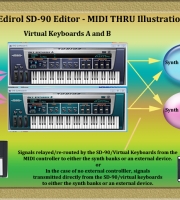
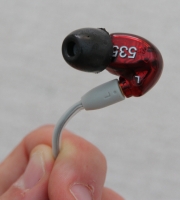
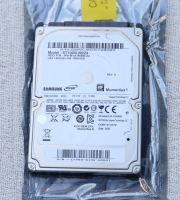
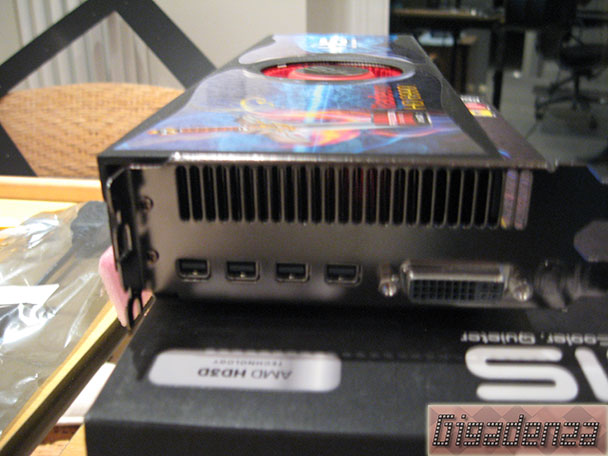
The card’s backplate has a large vented area to allow hot air to be exhausted as quickly as possible. Below that are four mini display ports and the usual dual link DV-I port.
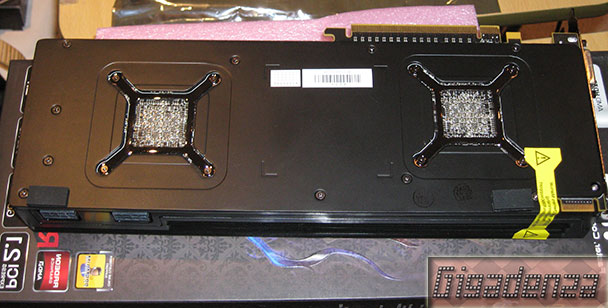
The rear of the card shows the position of its two GPUs, one on each side of the fan and as with the 5970, one horizontally aligned a little above the other. Note the yellow “warranty void sticker”, this is covering the dual BIOS switch which, if adjusted to “position 1”, will activate the card’s “OC mode” increasing the cores voltages from 1.12v to 1.175v and their speed from 830mhz to 880mhz. By introducing such an accessible hardware level overclicking facility, AMD clearly wishes to highlight the card’s potential to punch above its already colossal weight and many have rightly questioned their carrot and stick approach towards those who give into temptation. When pressed on the matter, they have allegedly stated that though there is no official warranty, they are confident that the cards will tolerate the extra demand. In a case where a customer’s card fails as a direct result of this feature being exploited – which would in itself be extremely hard to prove – it is difficult to imagine that any vendor with a half-decent RMA programme would simply turn a blind eye.
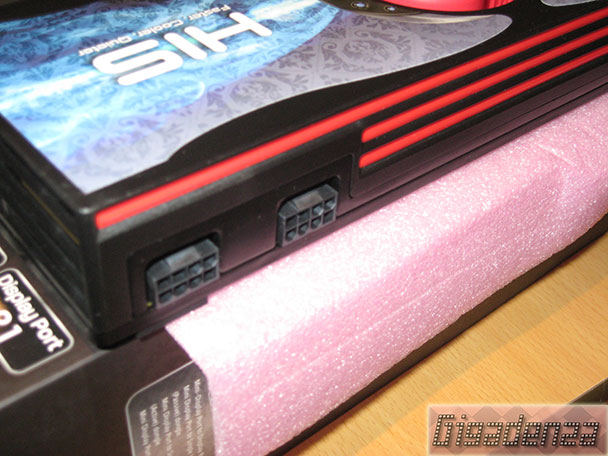
As mentioned earlier, the 6990 requires two 8pin PCI-Express connectors and AMD/ATI recommends no less than a 750 watt power supply to ensure stable operation. Theoretically, the maximum amount of power the card draws from its slot and both 8 pin connectors is 375 watts, 75 from the slot and 150 from each connector, which is its official default TDP (Thermal Design Power) rating. In practice however, specifically when running in overclocked mode, some reviews have estimated this figure to be as high as 500w. Presently, there is no accurate way to measure the power consumption of a video card separately from that of the total system but considering AMD’s official claim is 450 watts (in over clocked mode) and that this is what the card’s cooling system is rated to handle, a high quality PSU delivering 750 watts does seem a sensible minimum!
AMD has also implemented a new and adjustable power management system known as “powertune” which dynamically maintains the card’s core and memory speeds at their optimum levels in direct relation to its TDP and under extreme circumstances, prevents the card from exceeding it by reducing them. At first, this may sound like something of a copout but over the past two years or so, there have emerged several video card “stress testing” applications which place the GPU under far greater pressure than even the very latest games – two cases in point would be Furmark and OCCT – and it is specifically for these rare scenarios that the feature exists. For those who are still dubious, the card’s additional BIOS and drivers afford the ability to manually fine tune the TDP over a range of 40%, allowing a maximum in excess 450 watts. It is all but impossible to imagine a scenario that would necessitate as much power as this, let alone greater.
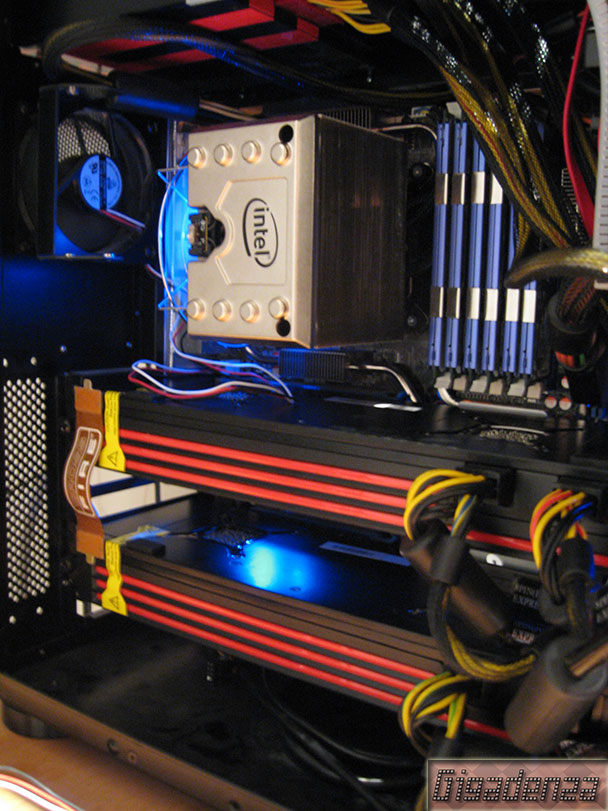
Two 6990 cards intalled in an Asus p6t7 Supercomputer motherboard.
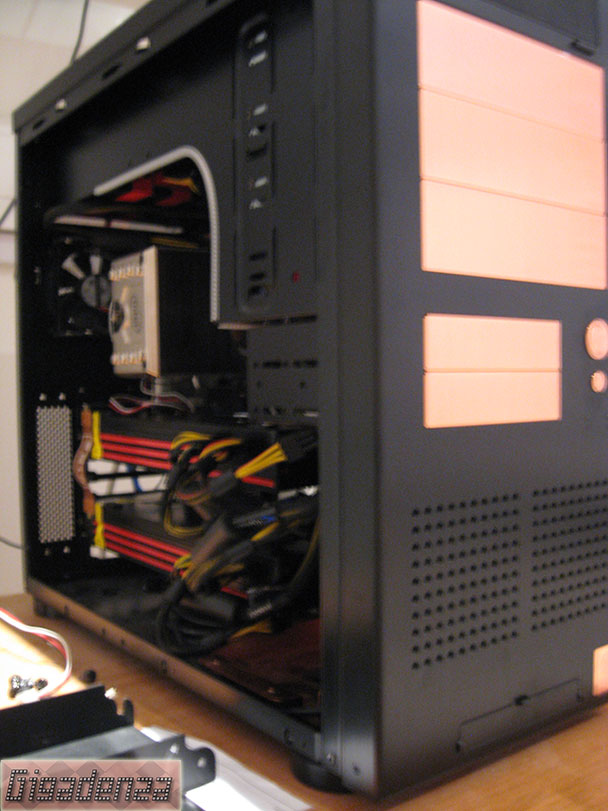
This last picture is a little blurred but it does demonstrate that a case based on a 10 year old design (a Lian Li PC-p60) is still capable of accommodating the latest hardware, the hard drive cage had to be removed though aside from this minor sacrifice, the cards fitted comfortably!